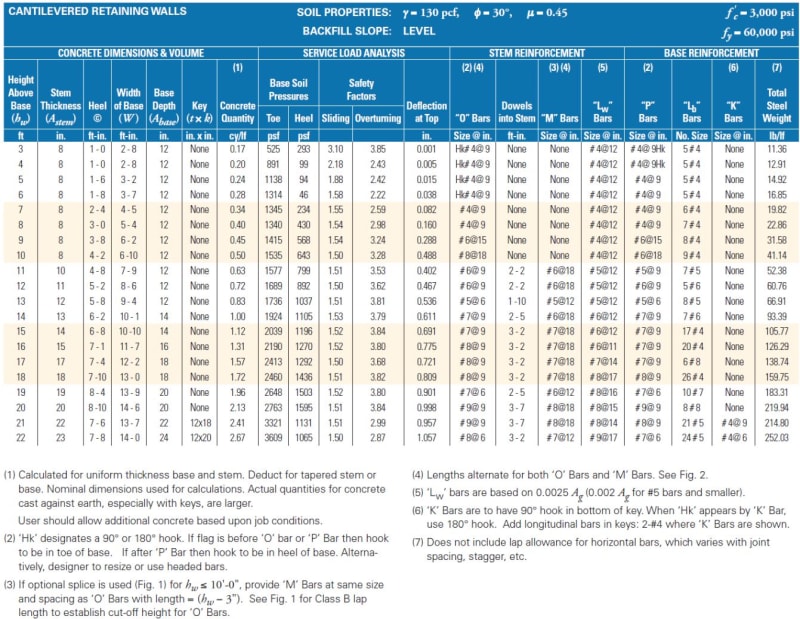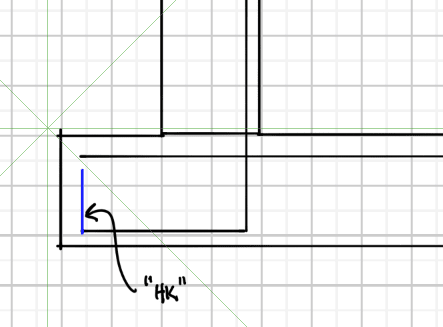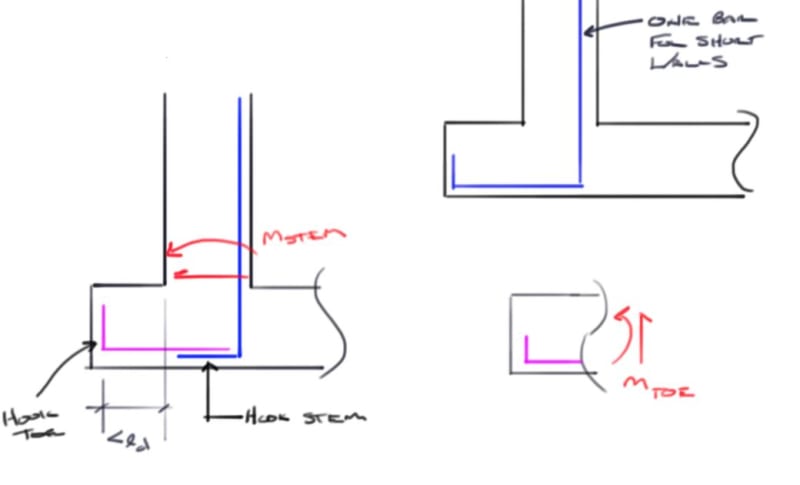I've been doing a lot of reading and studying up on cantilevered retaining walls lately. One of the sources frequently mentioned here is the CSRI Retaining Wall Manual. As I've been perusing the information in the manual I've come across some recommendations in their tables that don't make sense to me so I wanted to see if any of you could help me decipher some of these things:
1) See the table below. CSRI has 12 tables for level backfill where they use various values for different soil properties. On all of the tables they recommend a footing depth of 12" for all walls up to 14' tall. For many of these walls they recommend using "0" bars (the dowel bars from the stem into the footing) that are as large as #6 and #7 bars. My question is how are they proposing to develop the dowels into the footing for bars this large when they only have a 12" thick footing? For a #6 bar I calculate that a development length (ldh) of 18" would be needed, and for a #7 bar it would be 21" based off of ACI 318-14 Section 25.4.3.1. Are they simply reducing the required hook embedment by the stress ratio? Seems like some massive reductions they're taking for the dowels if that's the case...
2) Note in the table that for the "0" bars on the walls that are 6' and under they have the Hk tag in front (eg. a 6 ft. tall wall needs Hk #4 @ 9"). Footnote 2 says that Hk means that the bar should be hooked into the toe of the footing. That implies that all of the "0" bars that don't have 'Hk' in front of them do not need to be hooked into the toe. They aren't actually proposing that the "O" bars for walls over 6' tall just stab straight into the footing without any sort of hook into the toe....right? Every diagram they have in the manual shows the "O" bars hooking into the toe of the footing. There's got to be some kind of mistake here or I'm reading that footnote 2 incorrectly.

1) See the table below. CSRI has 12 tables for level backfill where they use various values for different soil properties. On all of the tables they recommend a footing depth of 12" for all walls up to 14' tall. For many of these walls they recommend using "0" bars (the dowel bars from the stem into the footing) that are as large as #6 and #7 bars. My question is how are they proposing to develop the dowels into the footing for bars this large when they only have a 12" thick footing? For a #6 bar I calculate that a development length (ldh) of 18" would be needed, and for a #7 bar it would be 21" based off of ACI 318-14 Section 25.4.3.1. Are they simply reducing the required hook embedment by the stress ratio? Seems like some massive reductions they're taking for the dowels if that's the case...
2) Note in the table that for the "0" bars on the walls that are 6' and under they have the Hk tag in front (eg. a 6 ft. tall wall needs Hk #4 @ 9"). Footnote 2 says that Hk means that the bar should be hooked into the toe of the footing. That implies that all of the "0" bars that don't have 'Hk' in front of them do not need to be hooked into the toe. They aren't actually proposing that the "O" bars for walls over 6' tall just stab straight into the footing without any sort of hook into the toe....right? Every diagram they have in the manual shows the "O" bars hooking into the toe of the footing. There's got to be some kind of mistake here or I'm reading that footnote 2 incorrectly.



